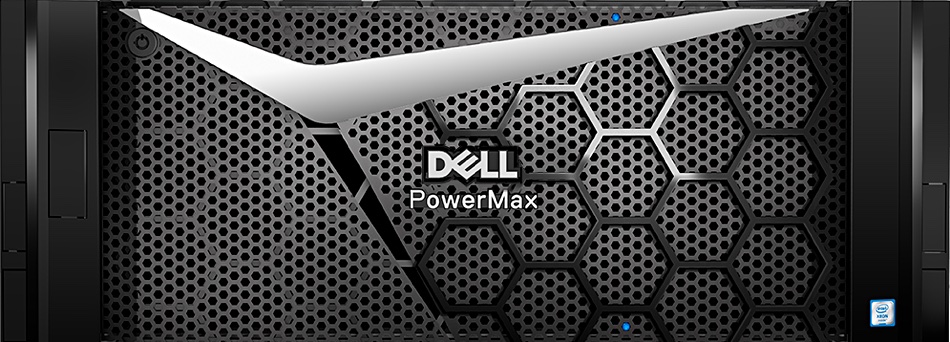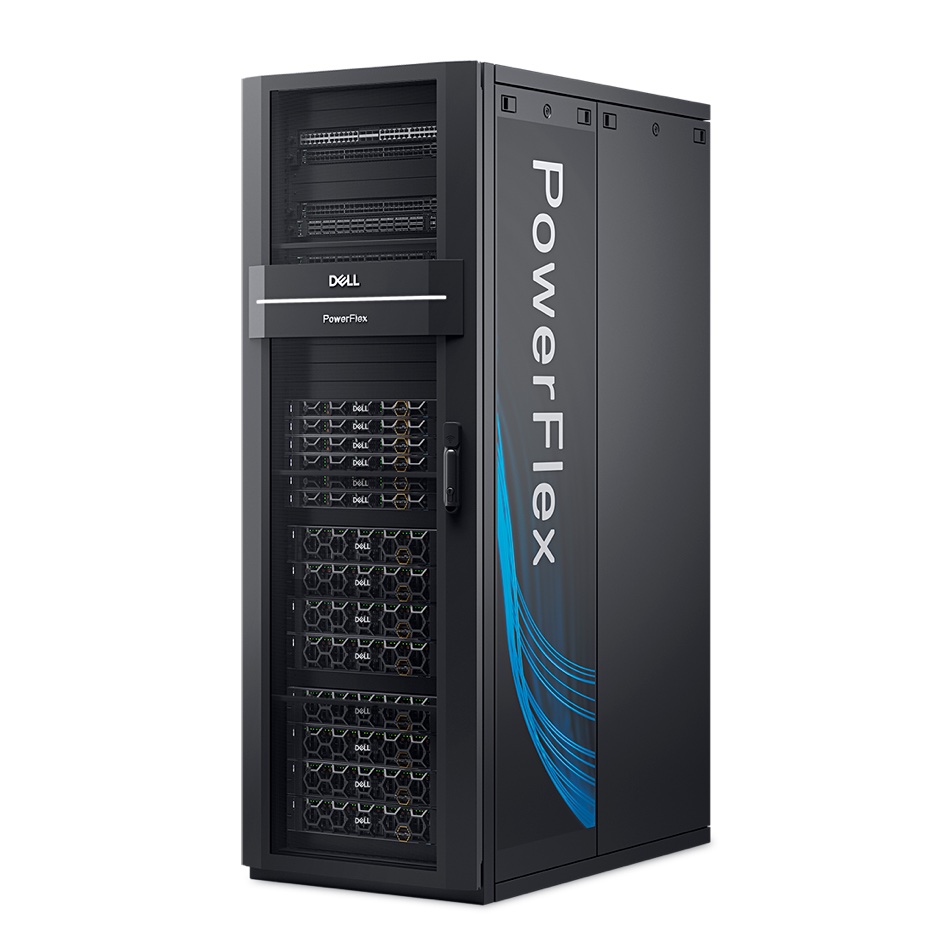Dell is raising its storage hardware and software game with updates to its PowerMax, PowerStore, PowerScale and PowerFlex systems that increase capacity, performance, automation, data mobility and security.
PowerMax is Dell’s high-end block array while PowerStore is a mid-range unified file and block array – the old Unity and VNX line. PowerScale is a scale-out file system array, based on prior Isilon technology. PowerFlex is a hyperconverged infrastructure (HCI) appliance system that accompanies the VxRail line but does not use that product’s VMware vSAN block storage software. This simultaneous four-system hardware and software refresh is a testament to the breadth and depth of Dell’s engineering resources.
Dell’s Jeff Clarke, co-COO, provided a quote emphasizing the software angle. “We’re delivering major software innovation across our portfolio to help customers make the most of their data and resources.” Dell said it is proving more than 500 software changes across its storage portfolio. In the midst of all this storage software one can get hungry for hardware and Dell did not disappoint.
PowerMax
There are two new PowerMax models, both NVMe-based. The 2500 follows on from the existing 2000 and the 8500 moves on from the 8000. Drew Schulke, Dell VP of product management – storage, meaning basically block storage, said it was: “The most impactful PowerMax development in eight years and just in time for IBM’s z16 mainframe refresh.”

Dell says users can experience double the performance with up to 50 per cent better response times in x86 and mainframe environments. Capacity goes up as well.
There are terminological changes. The old Drive Array Enclosure (DAE) becomes the Dynamic Media Enclosure (DME) and the old Engine (controller) term now becomes a Node. A Node pair is two nodes, natch, for cover against a single node failure.
The 2500 starts with one node and can scale to 4PBe – e for effective, meaning after data reduction – and with 4x DMEs, up from 1PBe before. Its base DME has, in the config we saw, 48x 15TB NVMe SSDs. It supports NVMe access and has has FICON (mainframe connectivity protocol and cabling) support, missing from the earlier 2000. The system will support the lower latency zHyperLink FICON connectivity method.
The 8500, also with a single node starting configuration, can now scale to 8PBe, and has a dynamic backend feature, still based on InfiniBand, for better internal connectivity. Both the 2500 and the 8500 support PCIe 4.
PowerMax gets flexible RAID to recover from drive failures, with RAID 6 12+2 support initially and 24+2 support coming. Cyber resilience is improved with cyber vaults for traditional and mainframe deployments, and CloudIQ ransomware capabilities help detect cyberattacks early to minimize exposure and speed recovery. CloudIQ is Dell’s AIOps service for looking after storage system health, performance and security. Multi-factor authentication is also supported.
PowerMax can now store up to 65 million immutable snapshots to improve the granularity of cyber-recovery and have an RPO of ten minutes after an attack. Schulke said: “Users have an incredible level of granularity.”
There is a new 4:1 data reduction (dedupe and compression) guarantee for conventional open systems and a 3:1 guarantee for the mainframe environment – a first, Dell claims. It was previously an open systems 3.5:1 guarantee.
PowerMax can now scale compute and storage separately to provide compute-heavy configs for high-performance usage and capacity-optimised setups for applications with massive data sets. It can also move data to the cloud with faster cloud snapshot shipping and recovery, easy restore of cloud-based object storage data, and with built-in high availability to minimize downtime.
Automated array operations include better multi-array provisioning, optimizing workloads and system health monitoring and problem fixing.
There is an anytime upgrade capability, with Dell coming along when required to change controllers and provide a data-in-place upgrade.
PowerStore
The PowerStore product has up to 50 per cent better mixed workload application performance, and up to 66 per cent more capacity. There are new VMware integrations, including improved vVols latency and performance, and simplified disaster recovery with vVols replication, VM-level snapshots and fast clones.

The PowerStore OS gets file-level enhancements including file level retention, native file replication ands support for third-party file monitoring and ransomware protection. Business continuity is helped by software-only high availability metro replication which can be configured in as few as five clicks.
There is also end-to-end NVMe support and increased networking speeds.
PowerScale
Dell is providing new quad-level cell (QLC) flash memory 15TB and 30TB drives for its PowerScale F900 and F600 all-flash models. They are supported by the currently shipping OneFS 9.4 release and mean, with 30TB QLC drive support, Dell can increase the raw capacity per node to 720TB for the F900 and 240TB for the F600.
Dell’s Sam Grocott, SVP for product marketing, admits that the acquisition cost per TB is higher for these QLC flash drives than near disk, but argues that in total cost of ownership terms, the QLC drives have a lower cost per terabyte than disk drives.
An upcoming OneFS software release, with tuned operations, provides a major performance enhancement for streaming read throughput gains of up to 25 per cent or more, depending on workload, on the all-flash PowerScale F-series NVMe systems. This is accompanied by support for NFS over RDMA (NFSoRDMA), which can accelerate throughput performance again. A non-disruptive software upgrade will provide the accelerated read throughput performance.
PowerFlex

This HCI system is getting new unified block and file capabilities on a single platform, which means that customers can consolidate traditional and containerized workloads across bare metal and virtualized deployments. Dell argues that PowerStore has the broadest file and block support for all major Kubernetes and container orchestration platforms from Amazon, Google, Microsoft, Red Hat, SUSE and VMware, compared to other HCI systems.
The product is also getting NVMe-over-TCP connectivity for lower cost NVMe over Fabrics connectivity using standard Ethernet. PowerFlex Manager software has new unified compute, storage and system lifecycle management capabilities.
Dell PowerStore, PowerMax, PowerScale and PowerFlex updates have planned global availability in the third quarter of 2022.








